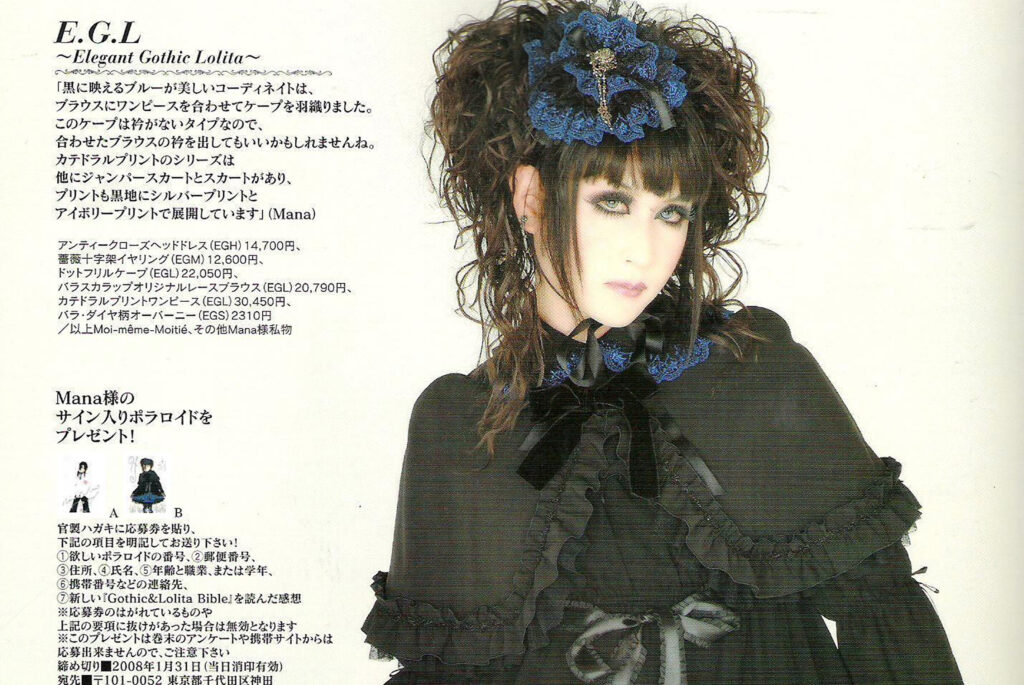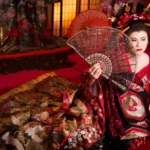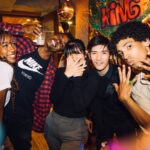What Does Crossdressing Mean?
Crossdressing simply means dressing like the opposite sex. Of course, this is rooted in very binary and traditional gender roles; but Japanese society still has a long way to go before men can comfortably wear skirts and dresses in public. Because men’s clothing is more strict in this way, it is most often men who are crossdressing (although women definitely do in some contexts as you will see).
There are different reasons and contexts for crossdressing: It may be for comfort, to challenge gender norms, to stand out, to perform, to mock or celebrate the opposite gender… There are about as many reasons as there are crossdressers!
While crossdressing is sometimes a first step towards discovering one’s transgender identity, being a crossdresser does not mean being transgender. It is an important distinction to make. With that being said, crossdressers are often known to identify as gay.
Learn more about crossdressing culture in Japan!
In this list are represented most of the mainstream crossdresser categories in Japan: TV personalities, actors, singers, and drag performers.
1. Matsuko Deluxe

About Matsuko Deluxe
Matsuko Deluxe is by far the most famous crossdresser in Japan. He is a TV talent who has appeared on dozens of talk-shows. His style includes ample dresses, usually of a solid color, minimal makeup with a winged liner and colored lips, and long hair usually held up.
Before becoming Matsuko Deluxe, he went to school for beauty and hairdressing, and wrote for the Japanese gay magazine Badi. After that, there was a time where he lived as a shut-in, or “hikikomori”.
Although not much is known about the person behind Matsuko Deluxe, including his real name, he is known to be a gay man. Beyond his representation of cross-dressers, Matsuko Deluxe also represents plus-sized people and gay men in Japanese media.
2. Hideaki Kobayashi

About Hideaki Kobayashi
Hideaki Kobayashi, also known as Sailor Grandpa, is an Internet personality. His style is consistently a traditional Japanese schoolgirl uniform. Often seen wandering the streets of Tokyo on the weekend, Hideaki Kobayashi is always stopped for photos and chatting.
In interviews, he has explained that wearing a uniform is the most comfortable for him and has made him come out of his shell. He also wants to surprise people and bring a smile to their face. He was actually invited to give a motivational speech in a Japanese school, which is a pretty progressive choice.
Professionally, Hideaki Kobayashi is a computer engineer, and has cosplay photography as a passion. He also joined an idol group, Chaos de Japon, for which he produces.
3. Mana

About Mana
Mana is a Japanese guitarist from the Visual Kei movement. If this movement has been known for featuring genderless and drag-ish costumes, Mana is one who has kept this appearance all throughout. He dresses in gothic lolita clothing, a style of which he was at the origin.
Mana is most known for being the guitarist of Alice Mizer and the founder and guitarist of Moi Dix Moi, but he was also in three other projects beforehand, mainly under the stage name Serina. It is not known whether he was already dressed in feminine clothing at that time.
Mana has created the record label Midi:Nette, and the gothic lolita women’s fashion brand Moi-même-Moitié. He is very secretive about his personal life and only speaks in the ear of another member during interviews, uses “yes” and “no” cards, or mimes.
Interestingly enough, Mana was a very macho teenager. Sometime after that but before Alice Mizer, he changed his views and said that he wanted to become the “ultimate onnagata”, or male-to-female performer.
4. Jasmine You

About Jasmine You
Jasmine You was another Visual Kei performer. He was best known as being the bassist of Versailles. Beforehand, he was also part of Jakura, Node of Scherzo, and fellow musician Izaki’s solo project. He unfortunately passed away in 2009, supposedly from an illness.
Jasmine You was known for his very feminine appearance, with a white face and heavy eye makeup, opulent dresses or outfits with a fascinator, long curly hair, and a gem in-between his eyes.
Very little is known about Jasmine You’s personal life. He created the band Jakura under the nickname Yuu.
5. Ladybeard

About Ladybeard
Although not Japanese but Australian, Ladybeard is a popular personality in Japan. His real name is Richard Magarey, and he is a wrestler, vocalist, and streamer. His style is usually a kawaii version of a school uniform or a maid uniform, his natural long hair tied in pigtails with bows, and two strands of hair let loose on his forehead.
Ladybeard has been cross-dressing since he was 14 years old, wearing his sister’s school uniform. Professionally trained on the Jackie Chan Stunt Team, in 2006, he moved from Australia to Hong-Kong to become a movie stuntman. There, he also started wrestling crossdressed, gaining attention. He moved to Tokyo in 2013 to pursue these two careers.
Ladybeard also has a musical career in kawaiicore, having formed three bands with Japanese female vocalists: Ladybaby (2015), Deadlift Lolita (2017), and Babybeard (2021). He also has a solo career, having been featured on songs of artists and bands from all over the world. In 2022, he created the podcast “Cat with Beard from JAPAN”.
6. Peter

About Peter
Peter, the stage name of Shinnosuke Ikehata, is a singer, dancer and actor. His clothing and mannerisms at the beginning of his career reassembled Peter Pan, which is how he got the nickname Peter. Peter is a gay man, possibly a transgender woman in light of his appearance over the past few years.
His career started at just 15, when he starred in the 1969 movie Funeral Parade of Roses as a young transgender woman. His naturally androgynous appearance has granted him the possibility to play transgender and even sometimes female characters. He dresses as a woman onstage.
Peter is a legacy of the postwar era, which was somehow very traditional and open to people like Peter at the same time. Peter has paved the way for today’s gender-non-conforming entertainers.
7. Bandō Tamasaburō V

About Bandō Tamasaburō V
Bandō Tamasaburō V is a kabuki actor. He is the most popular onnagata, or man performing as a woman, currently performing. His real name is Shinichi Morita; his adoptive father was Bandō Tamasaburō IV.
He has been performing since very young, as is common for theatre performers in Japan. He has performed all over the world, including North America and Europe.
Bandō Tamasaburō V is also a theatre writer and movie director. He has written several plays which have been performed, and he directed the movie Yearning in 1993.
8. Miki Maya

About Miki Maya
Miki Maya is one of the most famous otokoyaku, or woman performing as a man, in Japanese history. She was part of Takarazuka Revue.
She began her career in Takarazuka Revue in 1981, part of the Flower Troupe which she surprisingly never left (stars usually join the Star Troupe). She was given many main male roles, and retired in 1998. She then moved on to be a commercial actress.
Miki Maya is one of the few to represent female-to-male identities in society, which is still a point of contention in today’s society.
9. Vera Strondh

About Vera Strondh
Vera Strondh is a drag queen from the Philippines and probably Tokyo’s most famous drag queen from the younger generation. She is part of the Haus of Strondh. She has performed at all five iterations of the Opulence drag shows.
Before becoming a drag queen, Vera Strondh was primarily a dancer. She used to visit Nichome daily and drink a lot. Then, she started working at the bar Eagle, where she met her drag mother and her “father” at the same time. Her drag mother is Victoria Strondh, and her “father” is called Marcel. Vera comes up with ideas for costumes, and Marcel makes them come to life.
Vera Strondh truly represents the new scene of drag queens in Tokyo: talented, diverse, and admired.
Learn more about our favorite bars in Nichome!
10. Derek Toro

About Derek Toro
Derek Toro is Tokyo’s most famous drag king. He is also from the Philippines, and her out-of-drag name is Ice Elloso. His character is a very macho man who mocks the exaggerated masculinity in Hollywood movies. He is very shy of drag.
He began his career in 2021, just after the pandemic. I actually saw one of his first shows, he was dressed as an angel for a Valentine’s Drag Race viewing party at Eagle! Since then, his popularity has skyrocketed. He won the lip-sync competition Sparkle: Road to Opulence, which earned him a spot as a local performer for the fifth volume of Opulence.
Derek Toro is the face of a new wave, as drag kings are still way less known and popular than drag queens.








